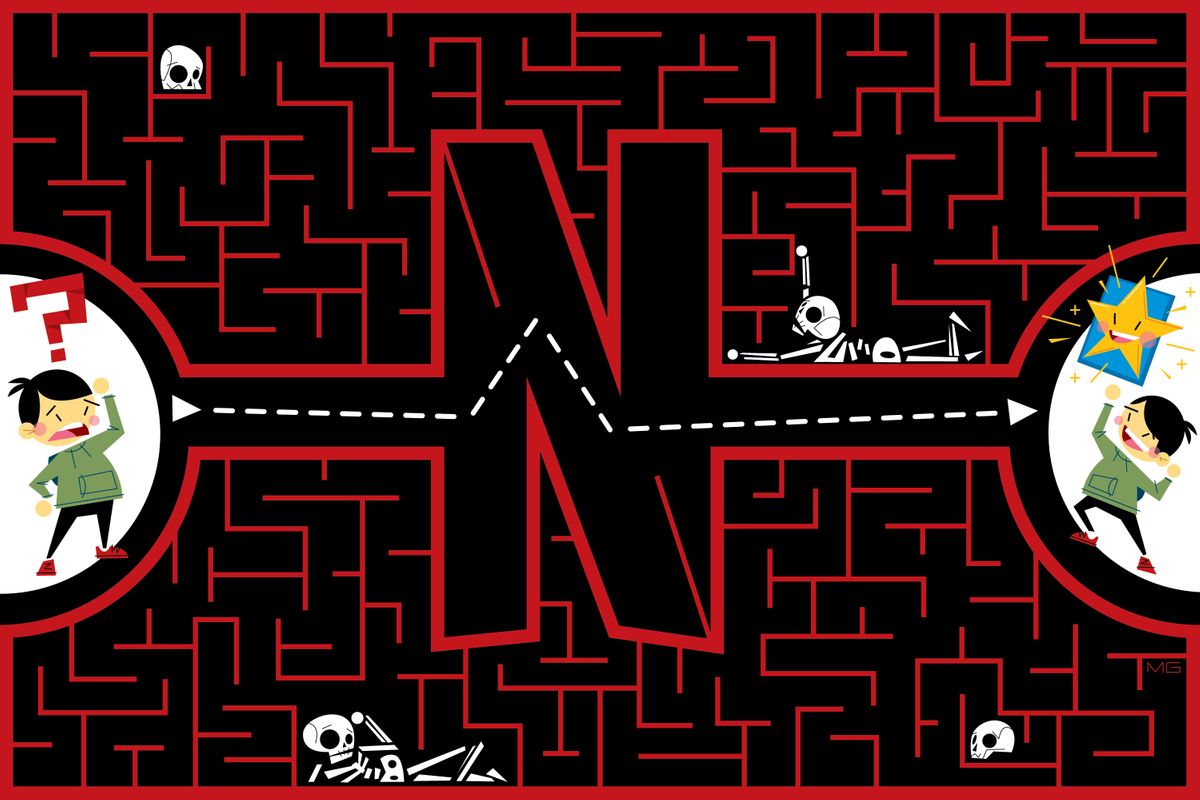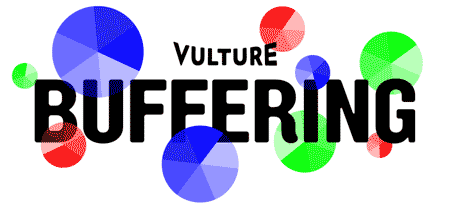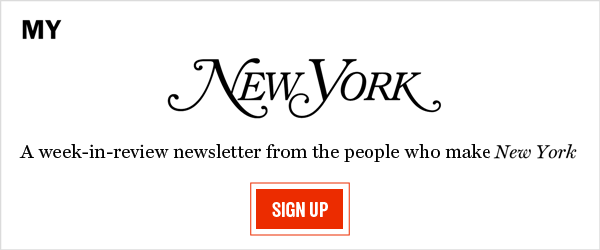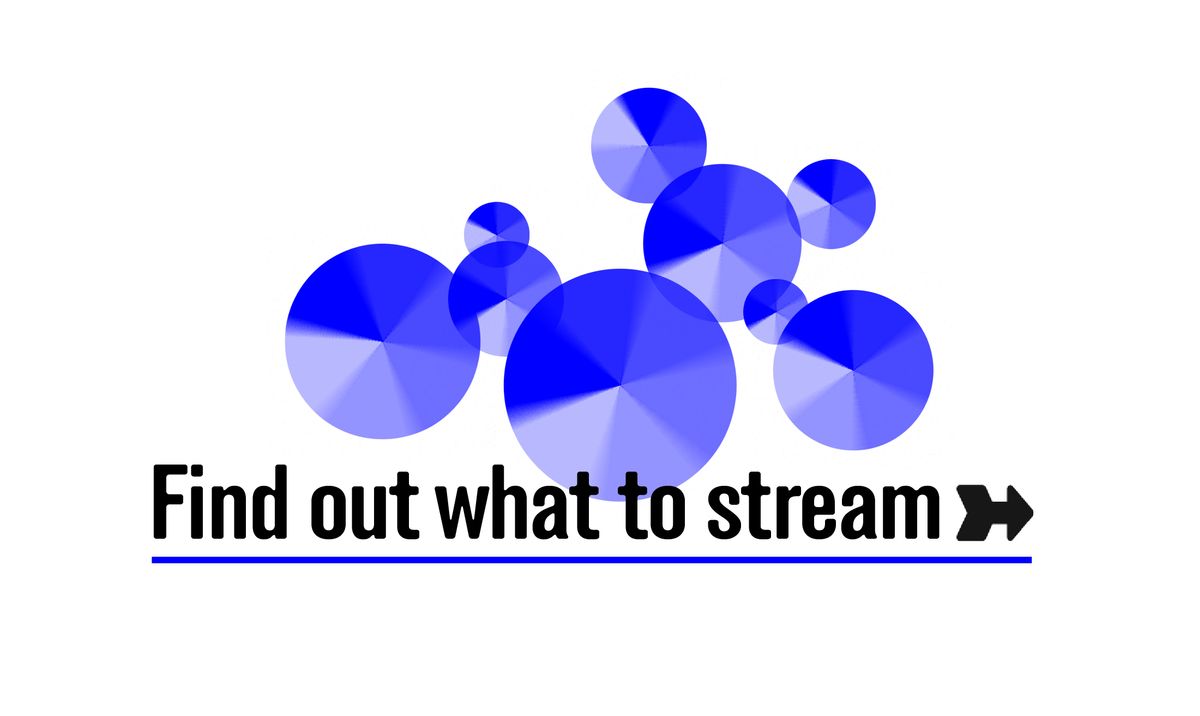 Three years ago this month, I spent several days hanging out at Netflix's Hollywood headquarters, reporting on a story about how it would become the first truly global TV platform. I recently got the chance to take another peek behind the curtain — though, thanks to the you-know-what, this time it was a virtual visit. Today's Buffering focuses on the result, my latest dispatch for Vulture looking at the creation of what could be a game-changing new feature for the Netflix app. Even if you've already seen it, read on for some analysis I couldn't squeeze into the article. We've also got a preview of next week's NewFronts, where all the cool free streamers will be hanging out. Thanks for reading, and happy almost May! –Joe Adalian |  | ![]() | | Illustration: Martin Gee | | | | Wednesday was Play Something launch day over at Netflix. After an extended period of beta testing under a couple of different names, the streamer's smart shuffle feature went live for users around the globe. It might not seem like it on the surface, but this is actually a pretty big change for the service: Instead of asking members to hunt through row after row of content to find a new show, Play Something approximates a TV experience by letting you randomly flip around a virtual dial. Netflix was so keen about the feature that it gave me access to a slew of its execs and engineers to talk about how — and why — they built it. If you missed it, you can check it out now over at Vulture. | | My story was pegged to the release of Play Something, but it is also about a bigger headache plaguing most of the major streamers right now: decision fatigue, or what some call the "paradox of choice." Basically, it means that some of us get so overwhelmed by the endless options on Netflix, Hulu, or Amazon Prime Video that we basically freeze. I loved this explanation of the phenomenon from Elena Neira, a professor at Barcelona's Open University of Catalonia and the author of Streaming Wars: La Nueva Televisión. | | "Finding something to watch is not a lean-back experience anymore; it's a challenge," she told me. The world of never-ending content rows "brings too many alternatives for our brains to handle, and that is when decision fatigue kicks in. We start to feel overwhelmed. We don't want to make a poor choice because we don't want to waste our time … The fear of getting stuck in this endless loop of indecision [is] exhausting. We freeze." | | Enjoying Buffering? Share this email with your network or subscribe now to get the newsletter in your inbox every week. | | The story also includes some insights from friend of Buffering and streaming-industry expert Matthew Ball, who explained how Netflix's superior user interface has helped the streamer build its dominance. He told me a few things I couldn't fit into the story, but I thought they were worth sharing here: | | • Ball got a bit more specific about exactly how much Netflix has benefited from its user-interface advantage. "Were it not for the company's technology, Netflix might have entered 2020 with, say, 50 million U.S. subscribers, not 60 million. There might be 20 percent lower daily consumption, 15 percent lower prices, and 10 percent fewer series watched per person. This is powerful, intangible lock-in." (I don't think Ball meant those numbers to be a precise estimation of how much a good UI is worth, but it gives you a rough idea of what it means.) | | • He noted that even though Amazon and Hulu wanted to be the everything store for streaming content, Netflix won the race. "Traffic data suggests that Netflix, a single service, has a greater share of video streaming than even the aggregator platforms that have their own licensed library, original content, and resell other subscriptions," he said. "This reflects the simplicity of its model but also its superior ability to understand its audience, deliver video, and surface recommendations." | | • While Ball obviously believes in the benefit of a good user interface, he cautioned against assuming decision fatigue is a life-and-death problem for a company like Netflix. As Netflix's VP of product Todd Yellin told me, a lot of folks want a "bountiful buffet" of content and don't mind searching through it. So while decision fatigue can be bad, "it's not strictly true that a service's goal is to minimize time to viewing in the way Amazon's e-commerce arm obsesses over clicks to purchase," Ball said. "It's also important to make the viewer aware of other current and forthcoming titles. They should always feel there's more they want to watch." | | Speaking of more to watch, Netflix usually doesn't hire celebs to promote new product features. But Play Something really is a pretty big deal, which may explain why it paid frequent Netflix star Will Arnett to give voice to a wary remote control in a social media campaign for the product. Watch the spot here, and then check out how Netflix sold its new user interface back in 2007. What's now so familiar was once exotic enough to warrant a mini-tutorial. | | One last thing: Netflix shared with me a few more insights about the future of its user interface, and I'm working on another report now. Stay tuned. | | It happened this week — let's talk about it.
Sign up for My Week in New York: a new newsletter from the editors. | | Monday kicks off NewFronts Week, which is basically to tech and ad-supported streaming companies what the advertiser upfronts are to network TV — but without as much shrimp and far less elaborate (and cheesy) production numbers. Of course, like upfronts, NewFronts will again be virtual. And one big past player won't be there: Disney-owned Hulu is skipping this year's festivities and will instead brief advertisers directly along with other Disney properties. | | The one thing I'll be looking for is what gets announced by the big FAST (free ad-supported television) platforms such as IMDb TV, Tubi, Crackle Plus, and the Roku Channel. All will have a presence, and they're getting much more aggressive about premium original content. Tubi now streams a ton of original unscripted series from owner Fox Broadcasting; Roku is getting ready to unleash a ton of originals it acquired from the dearly departed Quibi; and Amazon-owned IMDb TV is prepping a spinoff of Bosch plus a reboot of Leverage. This week it also green-lit a new comedy from My Name Is Earl creator Greg Garcia. That's the sort of thing you would usually see coming from either a linear-TV network or a big subscription streamer. | | I rang up IMDb TV programming and content co-chiefs Lauren Anderson and Ryan Pirozzi yesterday, and they told me the free streamer's presentation will be part of a bigger push by Amazon to brief advertisers on how the company's programming universe — which also includes Twitch, by the way — is evolving. "We're only three original series in, so NewFronts is an opportunity for us to sort of lay out that vision and some of the early work we've been doing," Pirozzi said. "We talk a lot about creating a modern network, and that's what we're doing here." Since Anderson was senior VP of programming at NBC in another life, I asked her if IMDb's portion of NewFronts will be as flashy as past broadcast events. "The last upfront I attended on the NBC side, Jennifer Lopez performed … We're not there yet," she said, laughing. But that's mostly because this year's event will be virtual: "When we're in person, you'll have more of that spectacle, I think." | | I, for one, cannot wait to see the Dancing Alexas. | | | |






No comments:
Post a Comment
Keep a civil tongue.